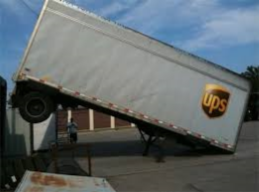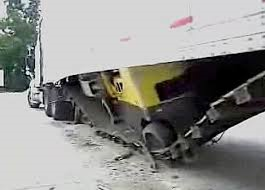A van moving or shifting while loading or unloading can cause a whole series of expensive problems.

While most forklift operators agree that chocks are good idea, that may be just one of several safety steps that your company should require to keep a van stationary and safe during loading or unloading.
Here are some important points to consider:
- Rear impact guard (ICC bar): Damage may prevent a dock lock from engaging fully and may indicate the presence of other damage to the trailer which can impact the capacity of the van.
- Front landing gear: Damage might cause the landing gear to collapse.
- Undercarriage: Examine the cross members of the undercarriage for missing pieces, excessive corrosion, or permanent deformation.
- Look for missing rivets near the bottom of the van.
- Exterior walls: Look for cuts/tears that exceed twelve inches or that affect more than one trailer side post.
- Rear doors and its hinges should be examined for damage.
- Interior walls: Look for damage within two feet of the floor in the sheeting and vertical posts.
- Van roof: Look for signs of damage.
- Van floor: Must be sound and capable of supporting the combined weight of the forklift and the load.
 Deficiencies in these nine areas may indicate possible serious damage to the van. Based on the extent of any damage noted you will need to determine whether the van is safe to load or unload.
Deficiencies in these nine areas may indicate possible serious damage to the van. Based on the extent of any damage noted you will need to determine whether the van is safe to load or unload.
If you would like to share your experiences/photos of forklift incidents that can educate others on the principles of safe forklift operation please send them to: bhulberg@D2000safety.com
We will not publish company or individuals names.
Newsletters may or may not open automatically, depending on the web browser settings you are using.